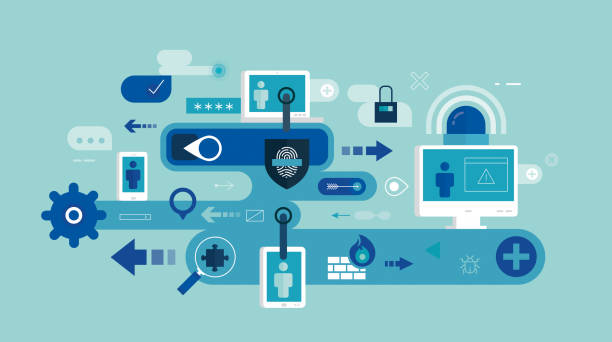Sponsored by ThreatLocker
Here are the 5 essential features an EDR should have
Despite some vendors using different terminology, the core functionalities are consistent

The widespread adoption of remote and hybrid work models means employees’ mobile devices, laptops, and whatnots are now the primary entry points for attackers.
Making matters worse, attackers are increasingly using more and more sophisticated threats that are designed to evade traditional defenses.
As such, dealing with them and covering all the bases requires the capabilities of an EDR solution - but which ones exactly will get the job done?
The good news is that despite some vendors using slightly different terminology or emphasizing certain aspects, the core functionalities are consistent across the board.
Try ThreatLocker for free for 30 days
ThreatLocker is a cybersecurity platform designed to give businesses complete control over what runs on their networks. It uses zero-trust application control, ringfencing, and storage control to block unauthorized software and prevent ransomware attacks. Businesses can easily deploy it to protect critical data, enforce policies, and monitor activity.
1. Continuous visibility
This is the foundational layer of EDR, operating as a constant, real-time security guard (or better yet, CCTV feed, since we’re talking about digital stuff) for every endpoint.
A lightweight software agent is deployed on each device to non-invasively collect vast amounts of telemetry data. It includes details on every process execution, file modification, registry change, and network connection.
From there, all of that data is sent to a centralized, cloud-based platform where it is stored in an easily searchable format (otherwise, it would be of little use) for analysis. In doing so, it provides an immediate, holistic view of everything that is happening on the endpoints.
Without this capability, an organization is oblivious to malicious acts that bypass traditional defenses.
Security teams would have blind spots, making it next to impossible to detect stealthy threats engineered to stay concealed for extended periods.
Due to the all-inclusive approach, continuous visibility also creates a full historical record of all endpoint activity, basically acting as a black box for each device.
This gives you or security analysts a complete historical timeline, enabling them to sort of play detective and trace back activities to understand exactly what happened during an incident, regardless of when it took place.
2. Behavioral analytics
Arguably, a feature that truly differentiates EDR from traditional security tools like antivirus software, behavioral analytics focuses on the way processes and applications act, as opposed to relying on a database of known signatures to block malicious files.
It uses advanced analysis and machine learning to establish a baseline of what constitutes so-called normal activity on an endpoint.
When a deviation from a baseline occurs, like a legitimate application trying to execute a PowerShell script in Windows or a user accessing a sensitive file they have never accessed before, the EDR flags it as an indicator of attack (IOA).
This behavioral approach is vital for identifying sophisticated threats such as zero-day exploits, fileless malware that never writes to the disk, and "living off the land" attacks that use legitimate system tools for malicious purposes.
In other words, the ability to spot behavioral anomalies allows an EDR platform to uncover threats that have never been seen before and would bypass all other forms of prevention.

3. Automated and guided response
One thing that every EDR solution can’t afford is to be passive, since it must jump into action at any time to contain a threat and prevent it from spreading. By design, it accomplishes that feat through a dual-pronged response capability.
For threats it’s highly confident and are actually threats (e.g., a known ransomware behavior), EDR can be configured to take instant automated action.
It might include isolating the affected endpoint from the network, terminating the malicious process, or outright deleting a file. This automated response dramatically reduces an attacker's dwell time, which is the period they have to operate undetected.
On the other hand, when more complex or nuanced incidents occur, EDR provides a guided response.
It presents you with a clear incident timeline and a range of one-click actions you can take, such as remotely forcing a device to restart, running an in-depth scan, or gathering further forensic data.
The goal is to quickly and effectively neutralize an attack without needing to physically access the device.
4. Threat hunting
The proactive element of EDR, threat hunting, empowers human analysts to hunt for threats that automated systems may have missed.
As explained before, EDR collects and organizes all endpoint telemetry into a searchable and queryable database. Analysts can use this rich data to search for subtle indicators of compromise (IOCs) or specific tactics that an adversary might be using.
For example, you might query the EDR data for any network connections to a known malicious site address or look for a specific sequence of actions that aligns with a known attack framework.
In case they find a threat, they can perform a triage and remediate the incident before it has the chance to turn into a full-blown breach.
And because they can trace the full attack chain (from the initial point of entry to all affected systems), thanks to continuous monitoring of all endpoint activities, the threat hunters can investigate suspicious behavior and offer advice on potential threat activity.

5. Threat intelligence integration
An EDR platform that delivers through and through is by no means a standalone system.
Rather, it’s a force multiplier that integrates with both internal and external threat intelligence feeds, which gives it crucial context to alerts and detections.
It’s like this. When a suspicious event is flagged, the EDR system can automatically cross-reference it against external databases of known malicious IP addresses, file hashes, and domain names.
Moreover, it can link the event to a specific threat actor or a known attack campaign, providing you with immediate insight into the nature of the threat.
With this enriched context, security teams can prioritize the most critical alerts, reduce the number of false positives, and enable them to make faster, more informed decisions.
Essentially, threat intelligence integration transforms raw data into actionable insights, making whoever is in charge of security far more efficient and effective at stopping sophisticated and targeted attacks.
Conclusion
In case it wasn’t clear at this point, the endpoint has become the new security perimeter.
The above-mentioned non-negotiables are the recurring and foundational elements that all top-tier EDR solutions are built upon.
Of course, there’s more to the story since there is no such thing as being ‘too secure’ when it comes to endpoint protection.
Ideally, you want a user-friendly dashboard, maybe some scalability, or even multi-platform support.
A lot of it will depend on your exact needs and budgetary limitations, but as far as essentials go, these five features are the absolute must-haves of a modern EDR solution - one that not only detects and responds but also provides the visibility and tools to hunt for and investigate threats.
Sign up to the TechRadar Pro newsletter to get all the top news, opinion, features and guidance your business needs to succeed!
Sead is a seasoned freelance journalist based in Sarajevo, Bosnia and Herzegovina. He writes about IT (cloud, IoT, 5G, VPN) and cybersecurity (ransomware, data breaches, laws and regulations). In his career, spanning more than a decade, he’s written for numerous media outlets, including Al Jazeera Balkans. He’s also held several modules on content writing for Represent Communications.
